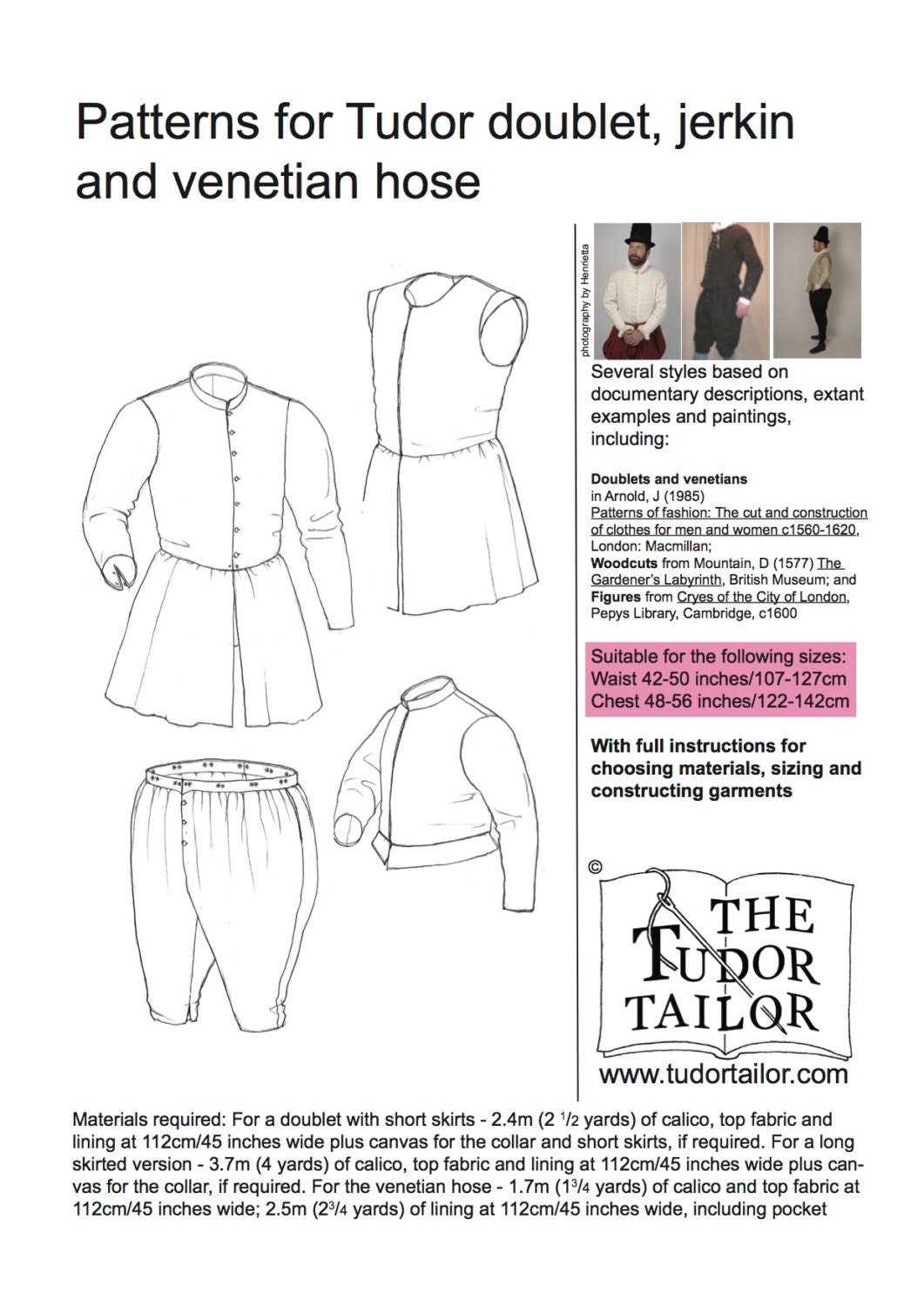| No Pants Zone |
Although having been a lifelong jeans-wearer (indeed, I went through a pretty long anti-dress phase in my youth), I had not until fairly recently taken thought to bifurcated nether-garments from a construction perspective. I attempted to knock out a couple pair a few years back as Pennsic-wear, and although they were serviceable for purpose, I wasn't particularly thrilled with the results, either for fit, function, or beauty; and I chucked the whole concept into the disused lumber-room of my mind.
This of course changed when I picked up an Elizabethan gentleman, and became acquainted willy-nilly with the world of trunk-hose, cannions, slops, Venetian hose, and so on. (We aren't even gonna get into pluderhosen.) I was at least armed with a copy of The Tudor Tailor, and starting with that (and consultation with the client), fit a pattern for Venetians that I ran off two black wool copies of. I measured, I fit, I measured again, I was careful and meticulous...and imagine my woe when he wore them at an event and we had to bring out emergency giant safety pins to avoid wardrobe malfunctions.
Nothing daunted (and used to suffering failure between measurement and product), I took them home, I took one pair apart, I re-measured...and the measurement was the same as what I'd measured in the first place. So, a failure in execution, perhaps? Very well. I re-gathered the waist of the pants, I reattached the waistband, I checked the measurement; and the pants were worn with the same result of falling-down-ness.
As is so often the case, there are several melodies of fail in my symphony of woe. The first is that I measured across the subject's natural waist. This tends to work on women; that is the narrowest point, usually; things will not fall down from there, because hips are in the way--particularly on me, having an hourglass figure (even if, right now, it's more of an hour-and-a-half glass). But, as the song says, don't you know that it's different for girls? Menfolk tend to be built in more of a straight line, and indeed depending on how they carry their avoirdupois, the natural waist may actually be the largest circumference. This is why belts are a thing in the modern masculine wardrobe.
 |
| Pattern in the Tudor Tailor shop. You can see the lacing holes in the waistband of the Venetians, there. |
Based on these, it would seem that if I a) fit the waistband of the hose to where the subject's jeans most comfortably fall, and b) make sure that all tops and bottoms are fitted with lacing holes, the primary issues should be resolved. So, that's where we are going next. This may require some after-market editing on pre-existing doublets.
Quaere: would this lacing the tops-and-bottoms together also have been found among working men, who would be taking their outer layers off to work in their shirts? Do we have enough evidence to make a call?
Mind you, I still have some other problems to work out; the patterns for Venetians all have little openings at the bottom, which are meant to be closed with hooks-and-eyes, and I couldn't grok from the patterns what was going on, so on all three pairs that's worked out very weirdly. I realized afterwards that the idea is to have something which can close snugly around just below the knee, capturing the stockings or nether-hose underneath. But anyways, I think I just didn't make them long enough. That may call for later editing, or maybe I'll just leave 'em and make the next pair better.
On a final note, I am somewhat comforted that a fellow who does this stuff for a living has also struggled with his Venetians.
https://youtu.be/t1ERDYjsHBg (Tudor monastery farm) mentions explicitly that working class men in England wore pants that required sewing in.
ReplyDelete